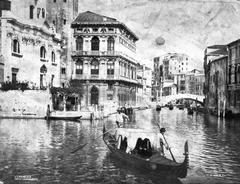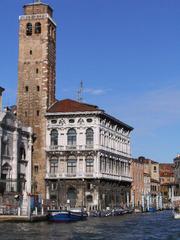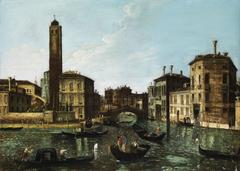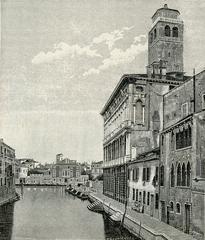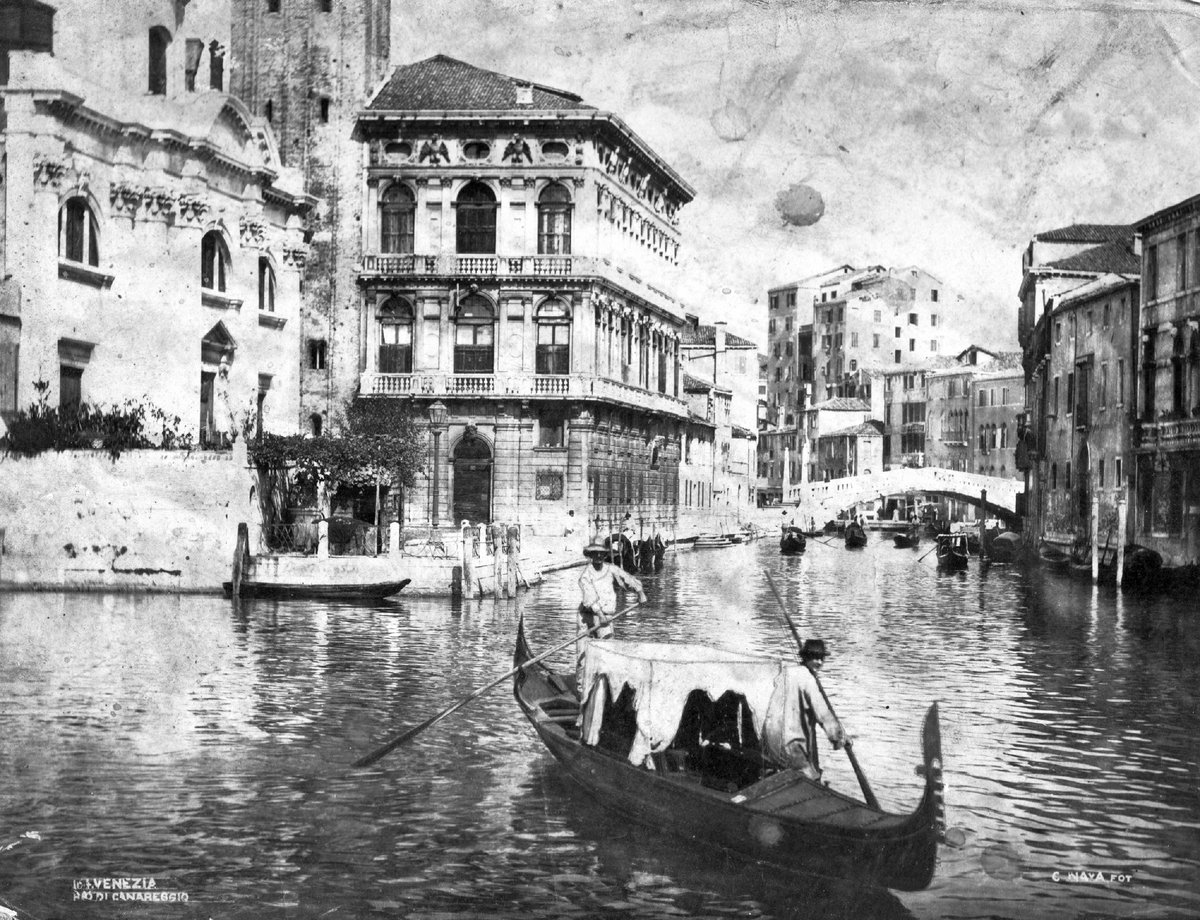
Palazzo Labia: Visiting Hours, Tickets, and Your Essential Guide to Venice’s Baroque Masterpiece
Date: 14/06/2025
Introduction
Palazzo Labia is a jewel of Venice’s Baroque landscape, captivating visitors with its architectural elegance and the world-renowned Tiepolo frescoes gracing its grand ballroom. Situated at the confluence of the Cannaregio and Grand Canals, it not only embodies the artistic heights of 18th-century Venice but also reflects the ambitions of the Labia family, who rose from merchant origins to Venetian nobility. Today, Palazzo Labia remains a rare, exclusive window into the city’s aristocratic heritage—offering a unique blend of art, history, and culture for those fortunate enough to visit (Wikipedia; Venipedia).
Historical Background and Architectural Significance
Rise of the Labia Family
The Labia family, originally Catalan merchants from Girona, were emblematic of Venice’s evolving social order in the 17th century. In 1646, amid the financial strains of the War of Candia, they purchased their noble status for 100,000 ducats—a practice that allowed the Republic to raise funds while reshaping the patrician class (Wikipedia; Ermakvagus). To assert their newfound prestige, the Labias commissioned a palace rivaling the grandeur of Venice’s most established families.
Architectural Vision
Construction of Palazzo Labia began in the late 17th century, with architects Andrea Cominelli and Alessandro Tremignon (and, in later stages, Giorgio Massari) contributing to its distinctive Baroque design. The palace features three monumental façades fronting the Cannaregio Canal, Grand Canal, and Campo San Geremia—an unusual tri-facade layout that maximized its visibility and social impact (bonjourvenise.fr). Decorative elements, such as arched windows, rusticated lower floors, and the family’s heraldic eagle, accentuate its imposing presence.
The interior is centered around a spacious courtyard, with a grand staircase leading to the piano nobile (main floor), where the Salone delle Feste—the magnificent ballroom—commands attention.
Artistic Marvel: The Tiepolo Frescoes
Between 1746 and 1747, Giovanni Battista Tiepolo, assisted by Gerolamo Mengozzi Colonna, adorned the ballroom with a fresco cycle depicting the legendary romance of Mark Antony and Cleopatra. These works, renowned for their theatrical composition, luminous palette, and illusionistic trompe l’oeil, are considered masterpieces of Venetian Baroque art (Venetiaviva; finestresullarte.info).
The frescoes’ dramatic scenes and allegorical figures reflect both the cultural sophistication of 18th-century Venice and the Labia family’s ambitions. Tiepolo’s innovative techniques influenced artists across Europe, solidifying the ballroom’s reputation as one of Venice’s artistic treasures (finestresullarte.info).
Visiting Palazzo Labia: Practical Information
Visiting Hours
Palazzo Labia is not open to the public on a regular basis, as it currently serves as the Venetian headquarters of RAI (Italy’s national broadcaster). However, guided tours and special cultural events occasionally provide access to the palazzo’s interiors, including the Tiepolo ballroom. Event-specific schedules typically fall between 10:00 AM and 6:00 PM, but it is crucial to check the latest updates on the official Palazzo Labia website or event organizers’ pages before your visit (Venice Insider Guide; Venetiaviva).
Ticketing and Bookings
- Advance Booking: Essential due to limited access and high demand for special events and tours.
- Ticket Prices: Generally range from €15–€25 per person, with potential discounts for students and seniors.
- Where to Buy: Tickets are available via the official Palazzo Labia website, Venice Tourism Board, and authorized tour operators.
Accessibility
Given its historic structure, Palazzo Labia offers partial accessibility for visitors with mobility challenges. The main entrance and certain areas are wheelchair-accessible, but upper floors and the grand ballroom may not be fully accessible. Contact the administration or tour provider in advance to discuss specific needs (Venipedia).
How to Get There
- By Vaporetto (Water Bus): The nearest stop is “Ferrovia” (Santa Lucia train station). The palace is a short walk from there.
- On Foot: Easily reachable from the station and Strada Nuova.
- By Water Taxi: Private water taxis can dock at the canal entrance for a more exclusive arrival.
Enhancing Your Visit: Culture & Nearby Attractions
Cultural Events and Guided Tours
Palazzo Labia sometimes hosts classical concerts, art exhibitions, and private events—most notably during the Venice Biennale. Guided tours provide deep insights into the art, architecture, and social history of the palace. Check event calendars on the official website and local tourism platforms for upcoming opportunities (Venice Insider Guide).
Neighboring Sights
- Jewish Ghetto: The world’s first ghetto and a center of Jewish history and culture.
- Campo San Geremia: A lively square with the Church of San Geremia and local cafés.
- Cannaregio District: Authentic Venetian shops, eateries, and picturesque canals.
Combine your palazzo visit with these attractions for a richer experience.
Visitor Experience & Tips
- Tour Duration: Visits typically last 30–45 minutes, focusing on the Tiepolo ballroom and select interiors.
- Photography: Policies vary; flash and tripods are generally prohibited to protect the artwork.
- Dress Code: No formal requirement, but respectful attire is recommended.
- Language Options: Some tours are available in multiple languages; confirm when booking.
- Preservation: Follow staff instructions, respect barriers, and avoid touching any artwork or decorations.
Conservation Challenges
While Palazzo Labia is celebrated for its artistic and architectural splendor, it faces ongoing conservation challenges. Structural issues—most notably in the Tiepolo Hall—have occasionally led to restricted access and urgent restoration projects (finestresullarte.info). Supporting official tours and preservation initiatives helps safeguard this heritage for future generations.
Frequently Asked Questions (FAQ)
Q: How can I visit Palazzo Labia?
A: Access is only possible during special events or through guided tours—advance booking is essential (official website).
Q: Are there discounts for students or seniors?
A: Yes, many tours offer concessions; check when booking.
Q: How long does a typical visit last?
A: Most guided tours last 30–45 minutes.
Q: Is photography allowed?
A: Often restricted to protect the frescoes—verify before your visit.
Q: Is the palace wheelchair accessible?
A: Some areas are accessible; contact ahead for details.
Q: What else should I see nearby?
A: The Jewish Ghetto, Campo San Geremia, and the Cannaregio district are all within walking distance.
Visual Highlights
- Exterior views of the tri-facade design facing the Grand Canal, Cannaregio Canal, and Campo San Geremia.
- Interior panoramas of the Salone delle Feste and Tiepolo’s frescoes (bonjourvenise.fr).
- Historic images from famed events, such as the “Ball of the Century.”
Alt text for images should use keywords like “Palazzo Labia Venice,” “Tiepolo frescoes,” and “Venice historical sites.”
Plan Your Visit & Explore More
To ensure a rewarding visit:
- Monitor the official Palazzo Labia website and Venice Tourism Board for openings and ticket releases.
- Download the Audiala app for real-time updates, audio guides, and personalized recommendations.
- Explore nearby Venetian palaces, the Cannaregio district, and related articles on Venetian history and art.
Further Reading and Official Resources
- Palazzo Labia – Wikipedia
- Bonjour Venise: Palazzo Labia
- Venipedia: Palazzo Labia
- Venetiaviva: A Jewel of Venetian Heritage
- Finestre sull’Arte: Tiepolo’s Invisible Frescoes at Palazzo Labia
- Venice Insider Guide: Palazzo Labia
- Official Venice Tourism Website
- Palazzo Labia Official Website
- Ermakvagus Guide to Palazzo Labia
Summary of Key Visiting Tips
- Access: By guided tour or special event only—book in advance.
- Location: At the junction of Cannaregio and Grand Canals, near the Santa Lucia train station.
- Ticketing: Purchase through official channels; check for discounts.
- Duration: Allocate at least 30–45 minutes for your visit.
- Combine with: Jewish Ghetto, Campo San Geremia, and local Cannaregio highlights.
- Stay Informed: Download the Audiala app and follow local tourism updates for the latest news and opportunities.
Experience the splendor of Venice’s Baroque age—make Palazzo Labia a highlight of your next Venetian adventure.
